2004
Type of resources
Topics
Keywords
Contact for the resource
Provided by
Years
Formats
Representation types
Update frequencies
Scale
Resolution
-
The aim of HITRAN (high-resolution transmission molecular absorption database) was to characterise the amount and wavelength-dependence of absorption by water vapour and other atmospheric species. It was part of the Natural Environment Research Council (NERC) funded Clouds, Water Vapour and Climate (CWVC) program. The dataset contains spectral line parameters derived from laboratory measurements on pure water vapour, and mixtures of water vapour and air. The measurements were made at STFC Rutherford Appleton Laboratory Molecular Spectroscopy Facility, and the line fitting was carried out by the Department of Meteorology at the University of Reading. The spectral line parameters are displayed in HITRAN format. Water vapour lines were fitted to the laboratory data in the spectral range 5037 to 5585 cm-1. These data are public.
-
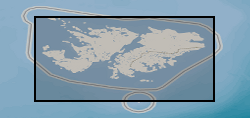
The dataset comprises maps and aerial photographs of the Falkland Islands. The maps are printers films and final paper printed originals of Falkland Islands OS maps, compiled for the Falkland Islands Government and the Foreign and Commonwealth Office by the Overseas Directorate of the Ordnance Survey. They were discarded by the Ordnance Survey around 2004, and offered to BGS for storage on behalf of the Falkland Islands Government. The Falkland Islands Government retains copyright interest in the maps. There are no access or usage constraints for BGS staff for BGS purposes. The aerial photographs and associated paper overlays represent copies of field slips of geological maps that were compiled by BGS under contract to the Falkland Islands Government. Copyright remains with the Falkland Islands Government , but there are no access or usage constraints for BGS staff for BGS purposes. Access to both datasets are restricted to BGS staff.
-
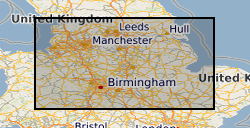
THIS DATASET HAS BEEN WITHDRAWN **This dataset was created for the "Britain beneath our feet" atlas using information extracted from the Geochemical Baseline Survey Of The Environment (G-BASE) For The UK . For Arsenic in soil data please see Geochemical Baseline Survey Of The Environment (G-BASE) For The UK ** Geochemical Baseline Survey Of The Environment (G-BASE) coverage for arsenic in soil. The G-BASE programme involves systematic sampling and the determination of chemical elements in samples of stream sediment, stream water and, locally, soil, to build up a picture of the surface chemistry of the UK. The average sample density for stream sediments and water is about one site per 1.5-2km square. Analytical precision is high with strict quality control to ensure countrywide consistency. Results have been standardised to ensure seamless joins between geochemical sampling campaigns. The data provide baseline information on the natural abundances of elements, against which anomalous values due to such factors as mineralisation and industrial contamination may be compared. Published in Britain beneath our feet atlas.
-

This dataset comprises the raster scans used as source information for capturing DiGMap 1:50000 scale data. The majority were processed under contract in India. Additions have been made. The images are georeferenced.
-
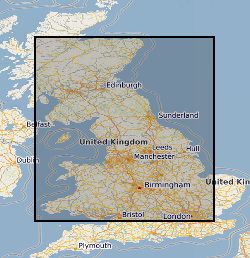
THIS DATASET HAS BEEN WITHDRAWN **This dataset was created for the "Britain beneath our feet" atlas using information extracted from the Geochemical Baseline Survey Of The Environment (G-BASE) For The UK . For Fluoride in Stream Water data please see Geochemical Baseline Survey Of The Environment (G-BASE) For The UK ** Geochemical Baseline Survey of the Environment (G-BASE) coverage for Fluoride in stream water. The G-BASE programme involves systematic sampling and the determination of chemical elements in samples of stream sediment, stream water and, locally, soil, to build up a picture of the surface chemistry of the UK. The average sample density for stream sediments and water is about one site per 1.5-2km square. Analytical precision is high with strict quality control to ensure countrywide consistency. Results have been standardised to ensure seamless joins between geochemical sampling campaigns. The data provide baseline information on the natural abundances of elements, against which anomalous values due to such factors as mineralisation and industrial contamination may be compared. Published in Britain beneath our feet atlas.
-
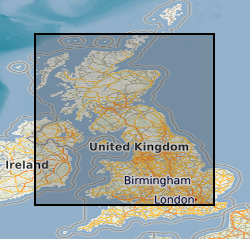
THIS DATASET HAS BEEN WITHDRAWN **This dataset was created for the "Britain beneath our feet" atlas using information extracted from the Geochemical Baseline Survey Of The Environment (G-BASE) For The UK . For Uranium in stream sediment data please see Geochemical Baseline Survey Of The Environment (G-BASE) For The UK ** Geochemical Baseline Survey Of The Environment (G-BASE) coverage for Uranium in stream sediment. The G-BASE programme involves systematic sampling and the determination of chemical elements in samples of stream sediment, stream water and, locally, soil, to build up a picture of the surface chemistry of the UK. The average sample density for stream sediments and water is about one site per 1.5-2km square. Analytical precision is high with strict quality control to ensure countrywide consistency. Results have been standardised to ensure seamless joins between geochemical sampling campaigns. The data provide baseline information on the natural abundances of elements, against which anomalous values due to such factors as mineralisation and industrial contamination may be compared.
-
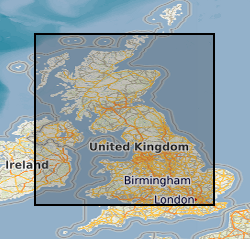
THIS DATASET HAS BEEN WITHDRAWN **This dataset was created for the "Britain beneath our feet" atlas using information extracted from the Geochemical Baseline Survey Of The Environment (G-BASE) For The UK . For Copper in Stream Sediment data please see Geochemical Baseline Survey Of The Environment (G-BASE) For The UK ** Geochemical Baseline Survey Of The Environment (G-BASE) coverage for copper in stream sediment. The G-BASE programme involves systematic sampling and the determination of chemical elements in samples of stream sediment, stream water and, locally, soil, to build up a picture of the surface chemistry of the UK. The average sample density for stream sediments and water is about one site per 1.5-2km square. Analytical precision is high with strict quality control to ensure countrywide consistency. Results have been standardised to ensure seamless joins between geochemical sampling campaigns. The data provide baseline information on the natural abundances of elements, against which anomalous values due to such factors as mineralisation and industrial contamination may be compared. Published in Britain beneath our feet atlas.
-
The Convective Storm Initiation Project (CSIP) aimed to further the understanding of the mechanisms responsible for the initiation of precipitating convection in the maritime environment of southern England; i.e. to understand why convective clouds form and develop into precipitating clouds in a particular location. Data have been collected from the 6th July 2004 to the 29th July 2004 by the Ultra-violet Raman lidar at Chilbolton Observatory, Hampshire. The dataset contains measurements of attenuated backscatter coefficients of aerosols within the atmosphere, and humidity mixing ratios. Plots of the attenuated backscatter coefficient, and of the humidity mixing ratios, at different heights are also available.
-
The Convective Storm Initiation Project (CSIP) aimed to further the understanding of the mechanisms responsible for the initiation of precipitating convection in the maritime environment of southern England; i.e. to understand why convective clouds form and develop into precipitating clouds in a particular location. Data have been collected from the 13th June 2005 to the 25th August 2005 by the Ultra-violet Raman lidar at Chilbolton Observatory, Hampshire. The dataset contains measurements of attenuated backscatter coefficients of aerosols within the atmosphere, and humidity mixing ratios. Plots of the attenuated backscatter coefficient, and of the humidity mixing ratios, at different heights are also available.
-
Study of intercontinental transport of air pollutants by means of coordinated flights over the East coast of North America, the Azores and the West coast of Europe. ITOP was a component of the International Consortium for Atmospheric Research on Transport and Transformation (ICARTT), an international initiative which coordinates the efforts of various American and European groups who have developed plans for field campaigns in the summer of 2004, with the aim of improving our understanding of the factors determining air quality over the two continents and over remote regions of the North Atlantic. The British contribution to ITOP, referred to as ITOP-UK, was funded by the Natural Environment Research Council (NERC) through the Upper Troposphere Lower Stratosphere (UTLS)-Ozone Directed Research Programme. The ITOP-UK dataset includes trajectories and other forecast products calculated by John Methven (University of Reading), based on European Centre for Medium-Range Weather Forecasts (ECMWF) forecast wind fields, to support ICARTT flight planning, near-real-time chemical analyses produced by the University of Cambridge, and data collected aboard the FAAM Bae-146 aircraft in July and August 2004.
 NERC Data Catalogue Service
NERC Data Catalogue Service